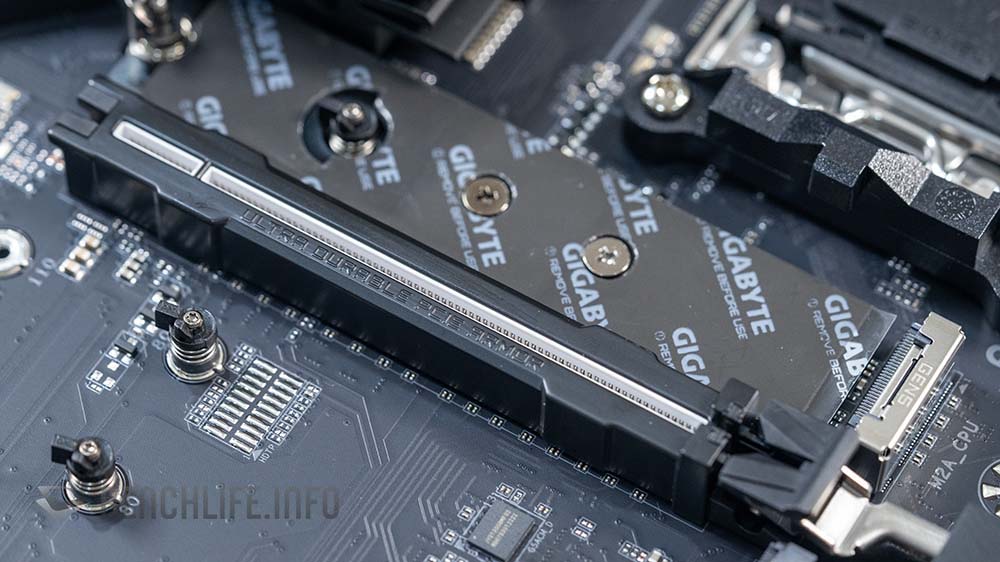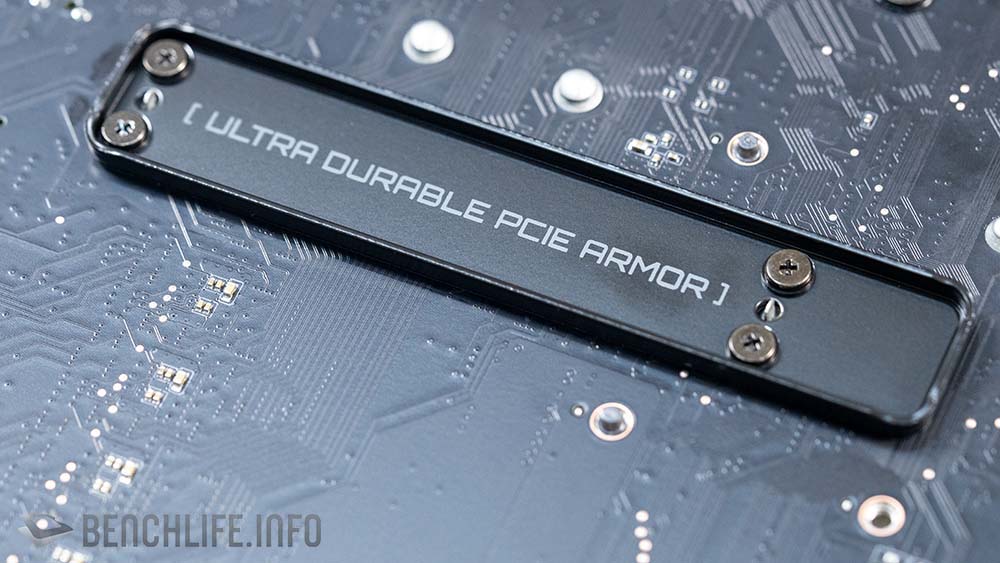
Anyone who's bought a high end graphics card over the last couple of years knows they are seriously chunky bits of kit. If they weren't used for gaming, they'd make pretty good blunt force murder weapons.
But in a sign that next-gen graphics cards are hitting the buffet, or in the gym getting bulked up prior to their next gen reveal, Benchlife shared a preview of the Gigabyte B650E Aorus Pro X USB4. It revealed the board's PCIe 5.0 slot has a rather shocking weight tolerance of up to 58 kg. That's 128 pounds!

Gigabyte refers to this slot as the PCIe UD Slot X. The slot itself doesn't appear to be significantly different to those on currently available boards, which often feature metal reinforcement and strengthened soldering. Gigabyte goes beyond though, as a look around the back of the board shows a small backplate secured with four screws. If you use this board, your graphics card surely won't be ripping out the PCIe slot.
These days, boards with some kind of reinforcement are not prone to failure, unless the slot is subjected to stresses caused by improper installation. The problem of sagging graphics cards can be alleviated by the use of support struts or brackets, but still, there are examples of cards with cracked PCBs around the slot finger area, which is the load bearing part of a sagging card. If the weight of your GPU is not properly balanced, PCB cracking can definitely happen.

Best CPU for gaming: The top chips from Intel and AMD.
Best gaming motherboard: The right boards.
Best graphics card: Your perfect pixel-pusher awaits.
Best SSD for gaming: Get into the game ahead of the rest.
Why would Gigabyte go to such lengths to reinforce a primary PCIe slot? If we follow logic, it would suggest that next-gen graphics cards are going to be even chunkier than they already are. Some high end cards such as the RTX 4080 Super take up four slots, and reach—or exceed—35 cm in length, the PCIe slot does have to put up with stresses it was never designed for.
If some next-gen cards take up five slots, then properly balancing and distributing the weight of such a beefcake card will become more important than ever.
Aside from the reinforced PCIe 5.0 slot, the B650E Aorus Pro X USB4 looks like a premium board, with a powerful VRM, lots of connectivity options and a comprehensive rear I/O. In fact, assuming it supports Zen 5 out of the box, one wonders why Gigabyte is using B650E chipset at all, when this could easily pass for an X870 or B850 board.
Next week's Computex is shaping up to be a mega one, as manufacturers are expected to unveil motherboards supporting next-gen Zen 5 and Arrow Lake CPUs. The PC Gamer team will be roaming the halls looking for all the goodies.







